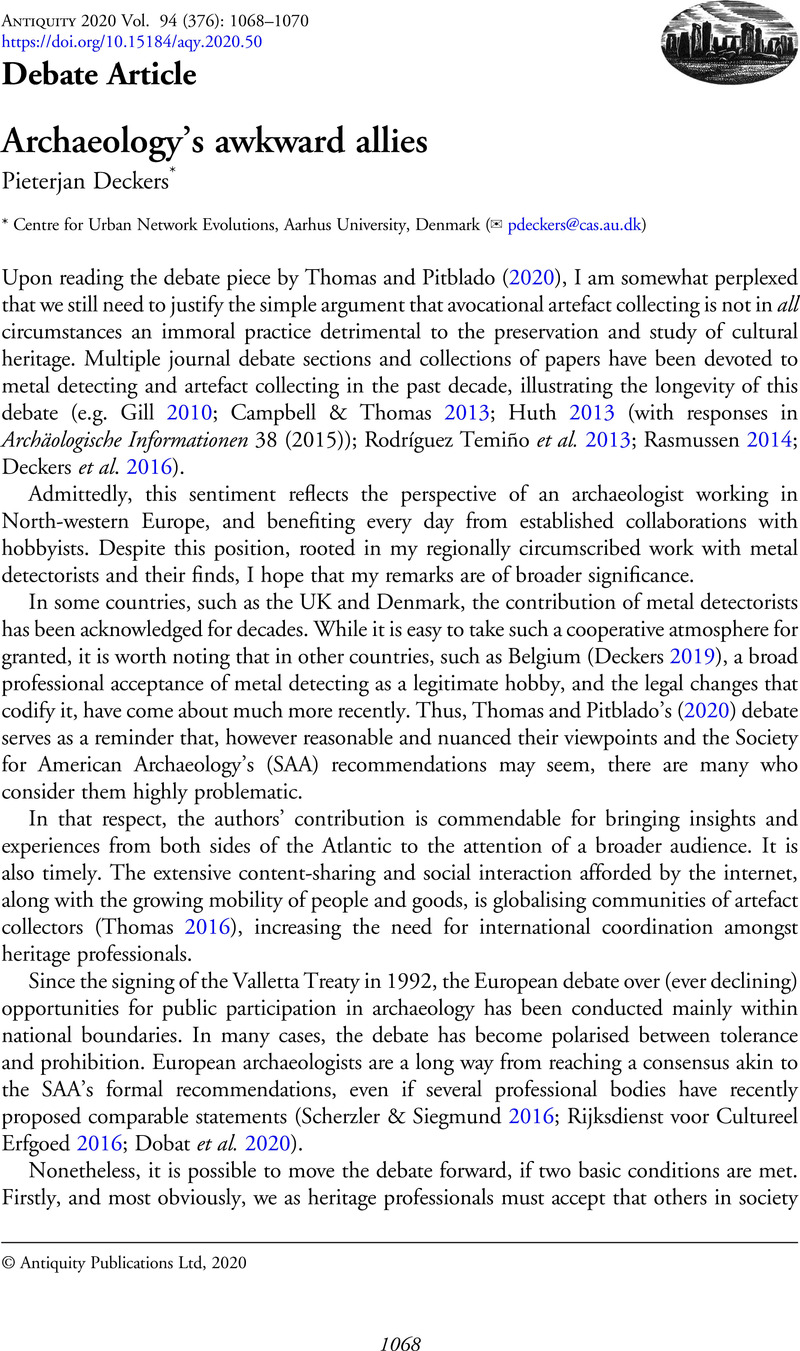Crossref Citations
This article has been cited by the following publications. This list is generated based on data provided by Crossref.
Pitblado, Bonnie L.
and
Thomas, Suzie
2020.
Unravelling the spectra of stewards and collectors.
Antiquity,
Vol. 94,
Issue. 376,
p.
1077.
Whisenhunt, Mary E.
2022.
The Potential and Pitfalls of Collector Collaboration in Southeast Arizona.
Advances in Archaeological Practice,
Vol. 10,
Issue. 1,
p.
65.



